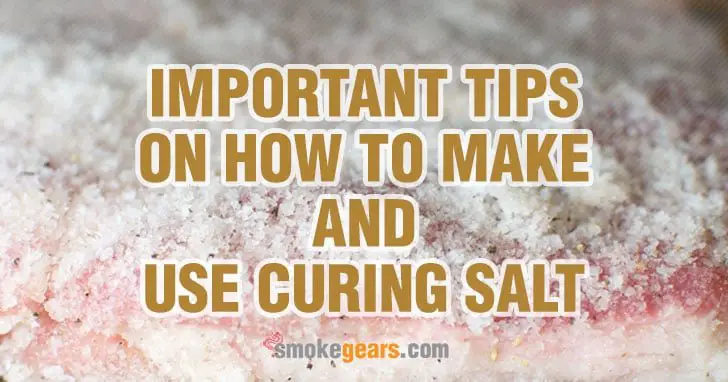Important Tips on How to Make and Use Curing Salt for Your BBQ
Curing salt is a useful preservative of meat that you want to season and keep for future use at home. Prior to drying, processing and smoking your meat, curing does not only increase shelf life but also enhances flavor. With creativity, everything becomes enjoyable. This is why, by opting how to make curing salt rather than buying from store, you’re adding charm to your kitchen life.
More...
How to Make Curing Salt
Furthermore, learning how to make curing salt allows you to add your own herbs and you’re your own rub. In so doing, you now can enhance the flavor, taste and smell of your meat even further. Before starting the process you have to clear about what types of meat are the best meat for the barbecue. The steps involved are simple. Read on to discover what they are.
What you need:
Step 1:
Mix 1 oz of sodium nitrite with 1 lb of table salt or sea salt in a bowl. This results in a perfect curing salt for your meat if you have to smoke at low temperatures for long. You can as well use it to cure fresh sausages.
Step 2:
Mix 1 oz of sodium nitrite, 0.64 oz of sodium nitrate and 1 lb of table or sea salt in one bowl. This curing salt effectively preserves meats that will neither require cooking nor refrigeration. For instance, it is good for pepperoni, salami, and other dry sausages.
Step 3:
Mix 4 lbs salt, 3 oz saltpeter and 1 1/2 lbs sugar in a bowl. This recipe makes a sugar cure mixture that adds a little bit of sweetness flavor to your meat. Usually, this cure works well with different types of pork meat such as bacon and ham.
Step 4:
Add any seasoning you prefer to any of the resulting curing salt in the above steps. Further, you can add any herbs, spices, seasonings or even sugar to curing salt you’ve prepared. This results in different but generally pleasant flavors to your cured meat.
If you want to know how to reverse sear steak, here this article for you.
How to Use Curing Salt
Using curing salt will basically depend on your own personal preferences. However, some tricks are still vital for the purposes of achieving the ultimate BBQ goal of perfectionism. Let’s navigate these tricks and watch out to see what you were previously missing out.
We have sectioned this guide into three vital areas: general usage of curing salt, use of curing salt for dry curing, and use of curing salt for brining.
Use of curing salt for general purposes:
Use of curing salt for dry-curing:
Use of curing salt for brining:
Conclusion:
In summary, making and using curing salt is apparently a skill worth learning in as far as kitchen tasks are concerned. Important to mention, the curing salt you make will significantly depend on what you intend to use it for. The trick to successful curing is to carefully regard every statement in this article.
As a new BBQ lover you should know which grilling and smoking mistakes can break your heart.
With a little bit of creativity, you can dry-cure, brine and indeed, do almost everything with your home-made curing salt. Important to realize, this is cheaper compared to buying already made curing salt from the store. Best of all, you can determine the rightful proportions of curing salt and its intensity by yourself. That is, if it is home-made rather than bought.


